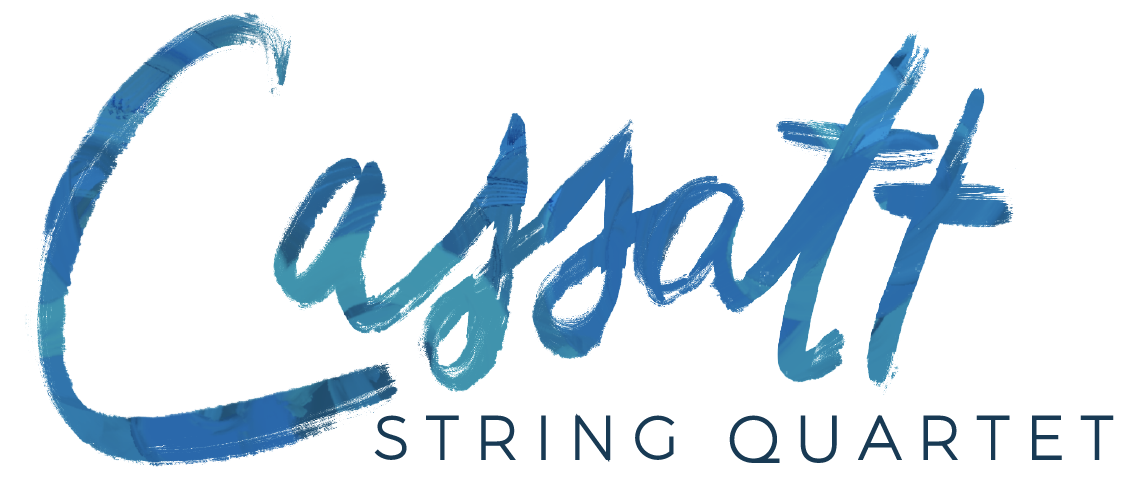Textura Reviews “Blue and Green Music”
Composer Victoria Bond belongs to no school but her own. She's neither serialist, post-modernist, nor minimalist, and she's no arch traditionalist either. Instead, she's someone who's absorbed and assimilated the traditions of classical music, past and present, and developed her creative persona into something entirely her own. Never does a Bond work seem a pastiche; on the contrary, each one impresses as an authentic creation whose artistic form has been devised in accordance with a clearly articulated concept. Whether it be an opera, chamber piece, or orchestral work, you don't know what a Bond composition will bring, but rest assured it will be a rewarding work of integrity, originality, and imagination.
Blue and Green Music provides a satisfying follow-up to her 2021 Albany Records release, Illumination, which features piano works performed by Paul Barnes. Her latest presents four pieces, two featuring the Cassatt String Quartet and the others baritone Michael Kelly and pianist Bradley Moore. These chamber-styled settings are as marked by her vibrant melodic sensibility as those of a larger-scale, and at seventy minutes the release offers a generous account of her artistry. The album is effectively shaped, framing as it does the vocal works with Blue and Green Music and Dreams of Flying, string quartet pieces commissioned by the Cassatt String Quartet and the Audubon String Quartet, respectively.
Fans of Georgia O'Keeffe might recognize Blue and Green Music as the title of one of her paintings, and as Bond's setting advances through its four parts it becomes apparent that the artists make excellent bedfellows. The flowing shapes and cool hues within the painting provide powerful guides, musically speaking, that Bond's clearly receptive to. Indicative of the lucid intelligence she brings to the composing process, she devised distinct motifs for the colours, motifs that are then elaborated upon and woven into graceful patterns.
“Blue and Green” opens with dramatic, almost angst-ridden gestures redolent of early twentieth-century string writing (Verklärte Nacht, for example) but gradually brightens as the patterns grow livelier in their interlacing. The Cassatt players navigate the shifting terrain of the movement with authority and amplify the emotional resonance of the writing at each moment. Things take a devilish turn in the oft- agitated “Green,” after which “Blue” instates a more lamenting tone and “Dancing Codes” caps the work with spirited flourishes. Throughout the sixteen-minute piece, O'Keeffe's striking ballet of form and colour finds its musical correlative in Bond's treatment.
For the eight-and-a-half-minute Art and Science, she drew for inspiration from a 1927 letter sent by Albert Einstein to the editor of a German magazine that for her confirmed what she'd long suspected, “that Einstein valued art fully as much as he valued science and drew a connection between them.” Of course the general appeal he would have for Bond is easy to understand when Einstein was as much intuitive thinker as scientific rationalist and when her music's similarly grounded in reason and imagination. Taking her cue directly from the source, Bond designed the tonal character of her material to match the letter content and the progression of ideas laid out by Einstein. Shifting confidently between contrasting moods, Kelly sensitively attunes his delivery to Bond's writing, and Moore shows himself to be as sensitive in his accompaniment.
The two are also called upon for From an Antique Land, a song cycle whose four settings explore memory via poems by Edna St. Vincent Millay, Percy Bysshe Shelley, and Gerard Manley Hopkin. Once again we see Bond fashioning music to reflect another's words. When two young people ride the Staten Island Ferry back and forth in “Recuerdo,” she customizes the music to convey the exhaustion the two are feeling after their night-long adventure and uses to-and-fro rhythms in the music to suggest the ferry's movements. In Shelley's “Ozymandius,” a pedestal on a broken statue found half-buried in the desert includes an inscription that ironically proclaims omnipotence by one whose power and memory have faded. Again Bond follows the poet's lead in alternating between barren episodes suggestive of a desert and declamatory passages that convey the arrogance of the dead figure's ego. Whereas tenderness is embodied in her music for “Spring and Fall,” its words about a child grieving the leaves falling in autumn, “On Hearing a Symphony of Beethoven” exudes dignity and quiet rapture as Bond uses the third movement of the Ninth to musically ground the poet's desire for a sublime experience to endure.
Because Dreams of Flying was commissioned by the Audubon String Quartet, Bond decided to conceive the work, understandably, with birds in mind and specifically the sensation of flying. As abstract as instrumental music is, Bond has a gift for imbuing her writing with programmatic suggestiveness. To illustrate, the strings in the opening movement, “Resisting Gravity,” seem to hover high above the earth in seeming slow-motion (Bond isn't a derivative composer, yet one might legitimately be reminded of John Luther Adams' music in this case). In “The Caged Bird Dreams of the Jungle,” the moment the vision arrives is intimated by the joyful, dance-like flutterings of the strings. While it's certainly one of the album's most arresting moments, it's hardly the only one. Each of the four works is a distinguished creation that speaks powerfully on behalf of Bond's abundant gifts.
-October 2022 | Link to Full Review
